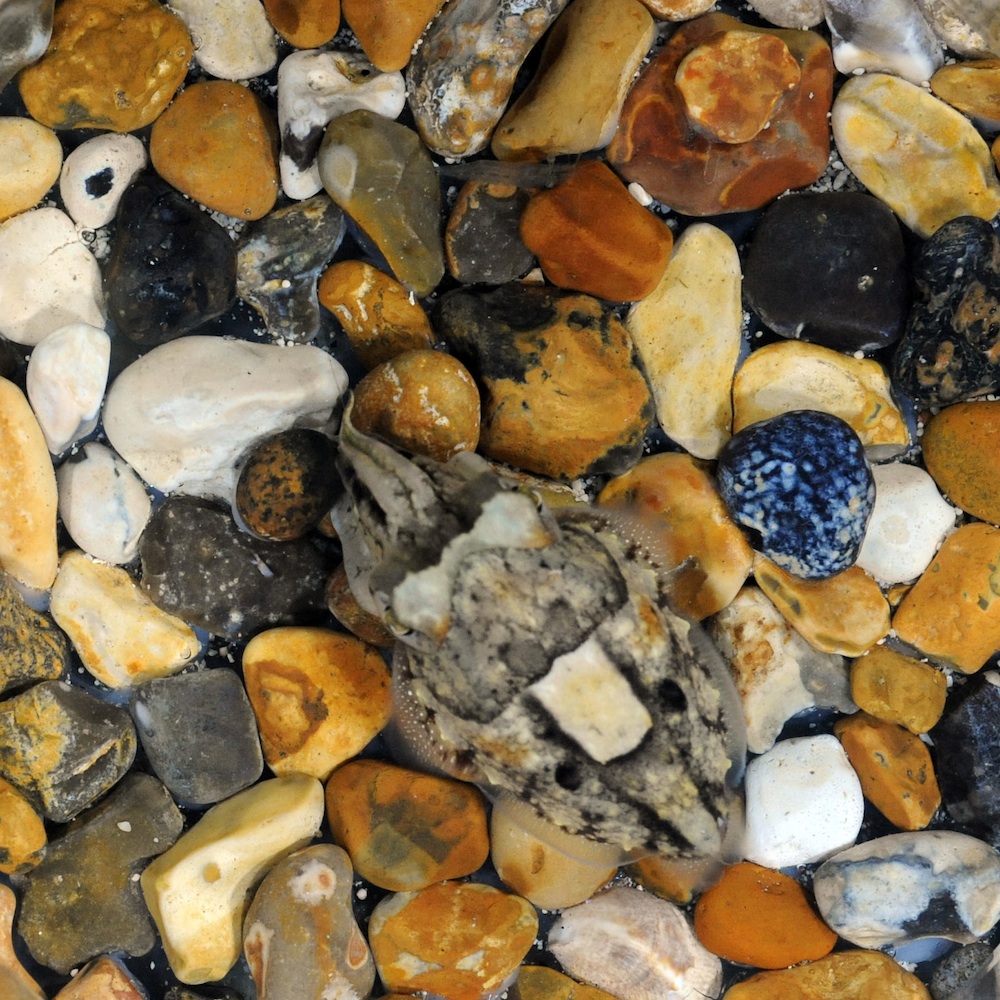Cuttlefish Use Humanlike Vision to Choose Camouflage

Here's a tongue-twister for you: Crafty cuttlefish can complete contours to carefully choose camouflage.
What this means, without all the alliteration, is that the visual systems of these squidlike creatures are more sophisticated than previously realized. In fact, cuttlefish can pick the perfect camouflage even without seeing the entirety of what they intend to blend in with, much as humans can translate simple line drawings into meaningful information.
"If you think of our ability to make sense of really basic visual information like cartoons and sketches and children's pictures, we're really good at just using 'edge' information and making sense of it," said Sarah Zylinski, the author of the study and a postdoctoral researcher at Duke University. "It seems that for cuttlefish, too, edges are really important in making sense of the environment."
Filling in
The human visual system can "fill in" information to create shapes out of space, as illustrated by the famous "Kanizsa Triangle." This illusion consists of three angles and three black circles with pie-shape chunks taken out of them. The angles and circles are arranged such that the brain interprets them as two overlapping triangles.
Cuttlefish and other cephalopod relatives such as squid and octopus are mollusks, meaning they're closely related to slugs and snails. They also have specialized skin cells called chromatophores, which are under neural control and can rapidly change colors to match their environment.
But cephalopod eyes have evolved to work much like the eyes of vertebrates such as humans. Zylinski and her colleagues wanted to learn more about what cuttlefish can see, so they set up an experiment using the creature's camouflaging color-changing abilities to their advantage.
Sign up for the Live Science daily newsletter now
Get the world’s most fascinating discoveries delivered straight to your inbox.
The researchers used 18 captive-born cuttlefish of the species Sepia of?cinalis as guinea pigs, giving them several alternative backgrounds to see how the animals reacted. One background was gray dotted with white outlines of circles about 0.2 inches (6 millimeters) in diameter. This background reliably triggers the cuttlefish to put on "disruptive" camouflage — essentially a chunky, blocky pattern that would help the animal blend into a surface of large pebbles. [See Photos of Camouflaged Cuttlefish]
In another background, small fragments of the circle outlines were removed, leaving gaps in a shape that is still suggestive, to the human eye, of a circle. Sure enough, the cuttlefish responded to that pattern with disruptive camouflage, too. But when presented with the same circle fragments rotated so that they no longer looked like pieces of a continuous circle, the creatures put on a different, finer-grained camo pattern better suited for a small-scale background such as sand.
That means that despite the gaps, the cephalopods could perceive the first fragmented circles as whole circles, much like a human would. The findings, reported today (Feb. 14) in the journal Proceedings of the Royal Society B, suggest that cephalopods likely share humans' "rich perceptual experience" of the world, Zylinski said. (Though cuttlefish are colorblind, she added, likely because color vision would do them little good in their monochromatic ocean-floor habitats.)
Humans are very good at making sense of objects visually, Zylinski said. For example, we can recognize an object even if something else is partially obscuring it.
"For the cuttlefish, this is really important," Zylinski said. "They need to be able to match their background characteristics. Otherwise, they risk using the wrong camouflage and being detected by a predator."
You can follow LiveScience senior writer Stephanie Pappas on Twitter @sipappas. Follow LiveScience for the latest in science news and discoveries on Twitter @livescience and on Facebook.

Stephanie Pappas is a contributing writer for Live Science, covering topics ranging from geoscience to archaeology to the human brain and behavior. She was previously a senior writer for Live Science but is now a freelancer based in Denver, Colorado, and regularly contributes to Scientific American and The Monitor, the monthly magazine of the American Psychological Association. Stephanie received a bachelor's degree in psychology from the University of South Carolina and a graduate certificate in science communication from the University of California, Santa Cruz.









